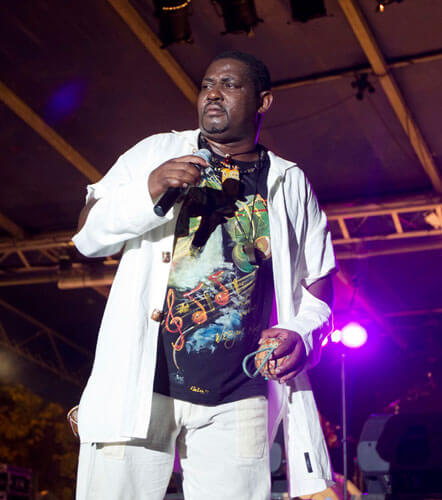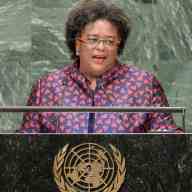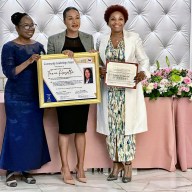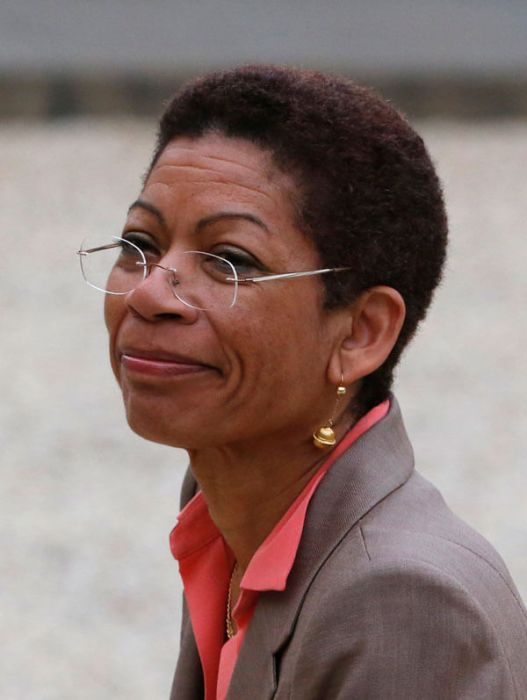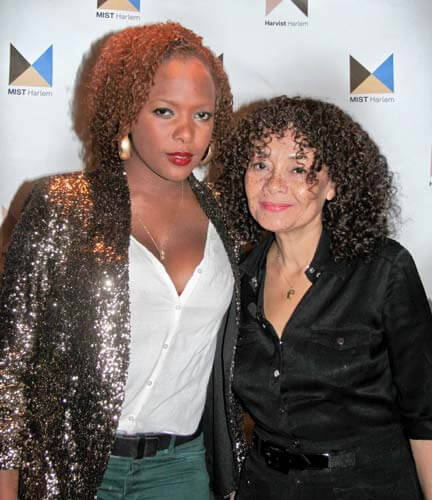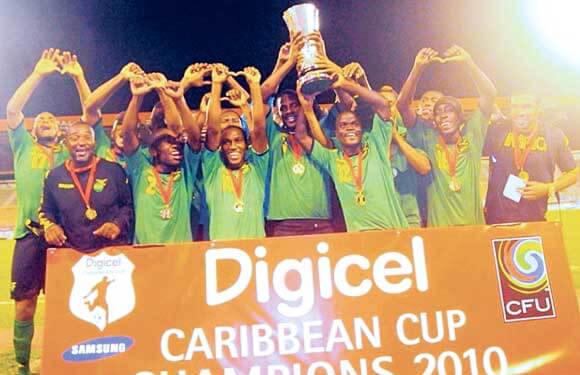UNESCO is recognizing gwoka as an integral part of Guadeloupean identity in its 2015 world heritage designations. The honor is notable because it was awarded for its intangible qualities. The designation usually is attached to site of architectural importance or natural wonders.
Gwoka in its most traditional form is the Lewoz, a communal gathering in which a drummer chooses one of the seven rhythms and dancers enter a circle formed by the audience and interact with the drummers.
“Gwoka most closely resembles the Bomba of Puerto Rico, in fact some historians believe there is a historical connection between the two,” ethnomusicologist Dominique Cyrille tells Caribbean Life. Ms. Cyrille worked closely with Felix Cotellon and a broad coalition of community members on the successful proposal. The rhythms show up in contemporary music in the work of artists including Wozan Monza, Esnard Boisdur, and Jacques Schwarz-Bart, but explains Raymonde Pater-Torin, gwoka is more than music and dance.
Ms. Pater-Torin is the founder, director and choreographer of Kamodjaka Dance Company. Growing up, her mother had a shop in Pointe-a-Pitre where the sugar cane workers would come to eat and drink. Two saturdays a month when they were paid, they played and danced Gwoka at the store and she was fascinated. Later, Velo, (the iconic master drummer) taught her and her sister to play the seven rhythms of gwoka, she says. At the time it was rare for a woman to play the drum.
Raymonde compares the fears some have about the UNESCO designation: that ‘Gwoka would become universal and lose its soul’ to the days when women were not allowed to drum. “Gwoka is stronger, we shouldn’t be afraid. Gwoka is the music of now, always changing always moving, it is in every moment and evolving with each breath, all throughout life. I am a dancer, but I don’t dance the way my mother danced. Its more than just in my blood, its the way I speak, dress, move, the way I grow in life.”
Wozan Monza is one of Guadeloupe’s foremost musicians in his music can be found strains of jazz and soul and strong vocals woven into the gwoka rhythms. He recalled for Caribbean Life how he was introduced to Gwoka: “I was then the youngest son of a family of 11 children and the one chosen to help my grand-father Durville “Vivilo” Monza, his real name, who became handicapped in a car crash a year after I was born. He was a keeper of ancestral knowledge because in addition to be a praised gwoka musician he was also a charismatic figure on plantation Meynard, located in Saint-Louis, Baillif. This plantation, where sugarcane and later on, banana were grown, was a place where enslaved laborers and, after emancipation, agricultural workers were exploited like in Louisiana. These places had created their own set of rules, had fostered a culture and modes of resistance that were specific. Gwoka, both a means and a music of resistance has always been the atavistic tool that best expresses the creole spirit of the Guadeloupean people.
Keepers of ancestral knowledge such as my grand-father contributed to keeping it alive generation after generation in the post-slavery era, like a link to the story of our deportation.

Gwoka is African in origins, yet it is profoundly and thoroughly Guadeloupean. Gwoka is the matrix that shapes our creoleness. It is the process by which our diverse communities (African, East Indian and European) not only could live side by side but also could merge. It is a great marker of our identity which, thanks to the work of some ethnomusicologists, of NGOs like Repriz and most importantly of tradition bearers who continue to keep all aspects of the gwoka world alive (music, creole speach, dance and other traditions that have been associated with it), will be proclaimed in 2015 by the UN(ESCO) intangible cultural heritage of the world.
My music takes part in this process. It merges melodic instruments with gwoka percussion instruments. Gwoka, like African root music is mostly based on pentatonic scales. From that, one can combine chords at will and pay attention to the seven rhythms of gwoka (Léwoz, Kaladja, Menndé, Toumblak, Padjanbel, Graj,Woulé). The function of the musical instruments are then inverted and the harmonic musical instruments as well as influences from jazz and blues have to meet the needs of the fundamental gwoka rhythms.
Monza’s 3rd CD album will be released in early 2015 (‘Maux Phrasés’… a word play based on the Creole expression “Mofwazé.”
The effort to attain the UNESCO designation began in 2011. Some artists such as Teddy Pelissier embraced it immediately others had to be convinced, the idea of intangible cultural heritage had to be introduced to the community. “It was a job I loved,” says Ms. Cyrille “Now the work really begins. Its time for:
(1) Public funding and institutions to become involved in several areas, research, education and facilities.
(2) For the Gwoka community to decide what they feel is important and how to commit to safeguard Gwoka.
(3) To show the world that a place called Guadeloupe exists and it has a unique cultural identity.”



